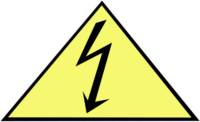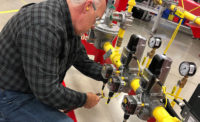While arc flash is an increasingly well-known phenomena, workers are still suffering injuries on a regular basis. In June 2019, OSHA cited a metal smelting company for electrical hazards after an arc flash caused three workers to suffer severe burns at the ASARCO facility in Hayden, Arizona. The company faces $278,456 in penalties for two willful violations and one serious violation.1
OSHA inspectors determined the arc flash occurred after the insertion of a breaker into a 4,160-volt switchgear. OSHA cited the company for its failure to provide a pre-job briefing before work began on the energized switchgear, render the electrical breaker inoperable before work began, and ensure the injured employees had arc-flash protective clothing.
“Employers must not jeopardize the safety of workers,” said OSHA Regional Administrator Barbara Goto, in San Francisco, California. “Arc flash hazards are well known, but can be eliminated when workers are properly trained and protective equipment is provided.”
Types of arcs
Arcs are basically ionized gases caused when electricity travels through air. “Arc flash”, “arc blast” and “electric arc” are really all different names for the same thing, according to www.e-hazard.com.
Arc flash expert Hugh Hoagland says, “The terms ‘electric arc’ and ‘arc flash’ are interchangeable. Arc flash describes the event from an experiential perspective. The term has become associated with the dangerous event, but it is interchangeable with ‘electric arc.’ Electric arc is another technical term. Electric arc is not dangerous (think neon lights).”2
E-hazard says there are four basic types of arc flash:
- Open air arc: The primary, most commonly understood arc used in arc testing
- Arc-in-a-box: Used in one form for arc testing in the EU
- Ejected arc: When arc plasma hits the worker
- A tracking arc: Most common at higher voltages, arc plasma conducts on skin or through clothing
Training is key
The following tips for training workers from TPC Training are based on requirements from OSHA and NFPA.3
- Perform a risk assessment: NFPA 70E focuses on performing a risk assessment of each individual piece of electrical equipment rated over 50 volts in an energized state.
- Electrical Hazard Site Analysis: The Institute of Electrical and Electronics Engineers (IEEE) 1584 guide contains methods for calculating the arc flash hazard throughout an installation.
- Perform required maintenance: Proper periodic maintenance on electrical equipment is key to minimizing the risk of arc flash and electrical shock.
- Provide personal protection: Employers should provide certified personal protective equipment (PPE) to each employee who is expected to work with live power sources or within arc flash incident energy and protection boundaries.
Sources:
- https://www.osha.gov/news/newsreleases/region9/06062019
- https://www.e-hazard.com/blog/difference-between-electric-arc-and-arc-flash/
- https://www.tpctraining.com/blogs/news/arc-flash-safety-tips




